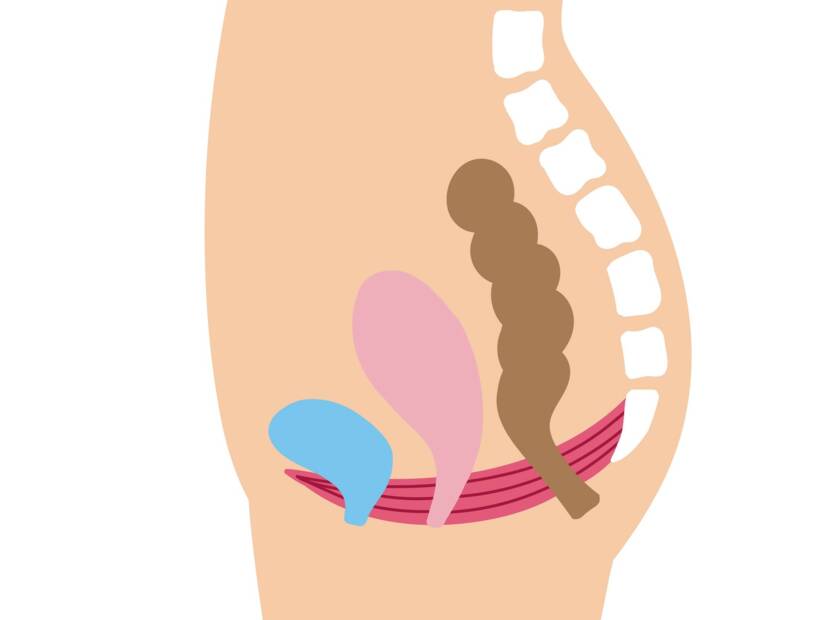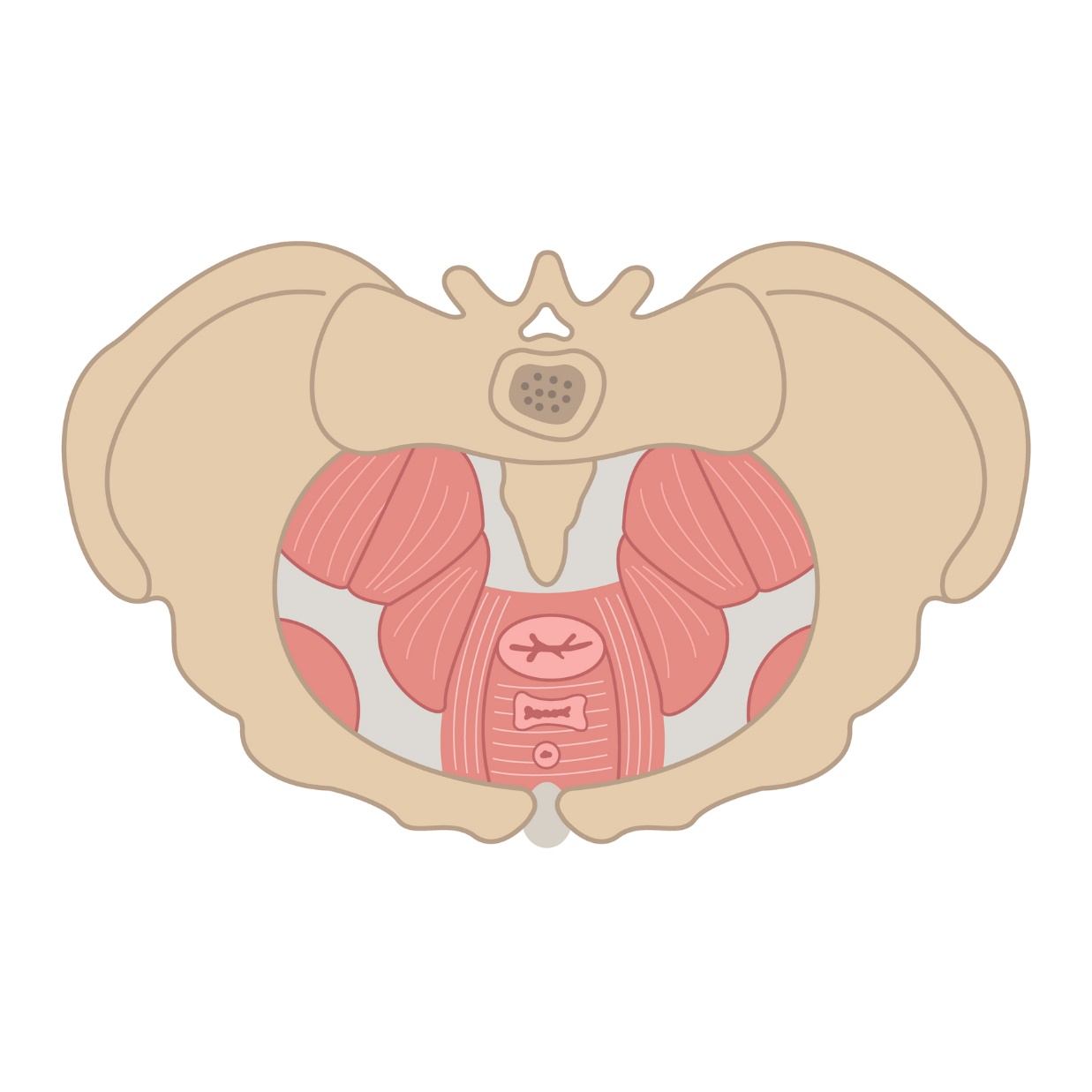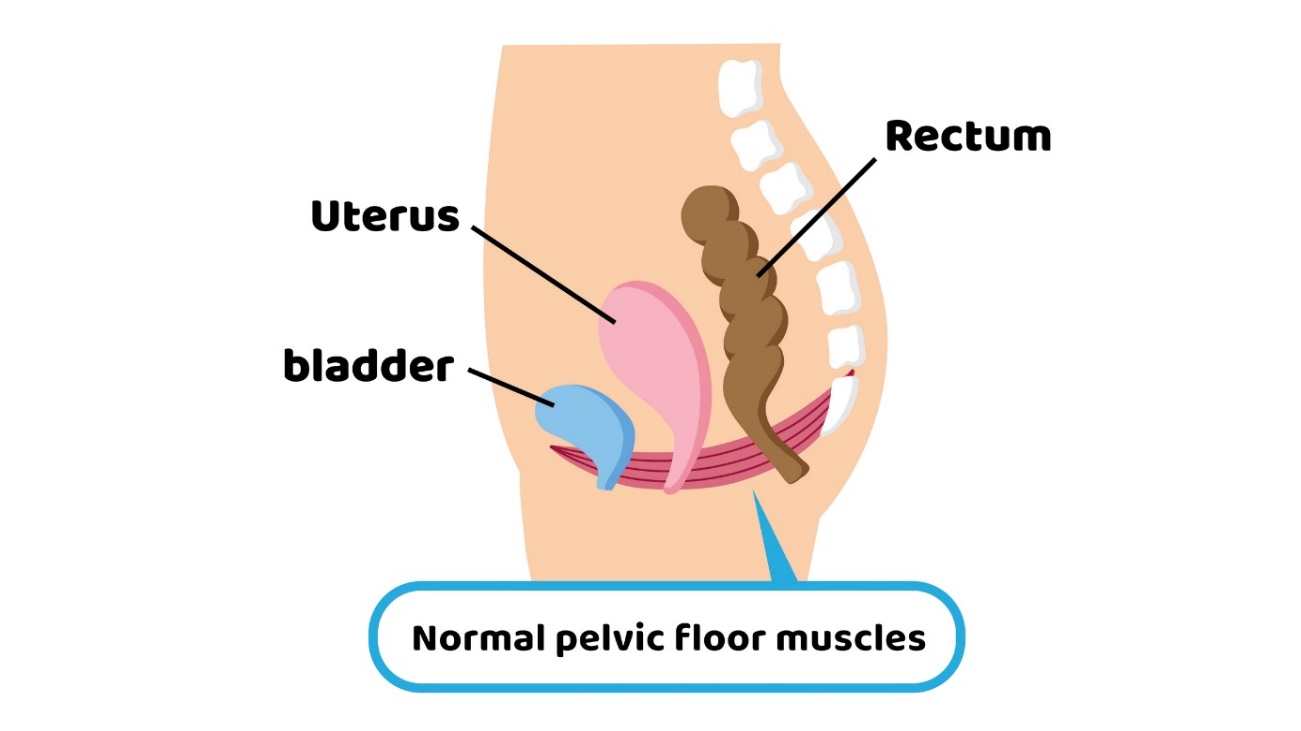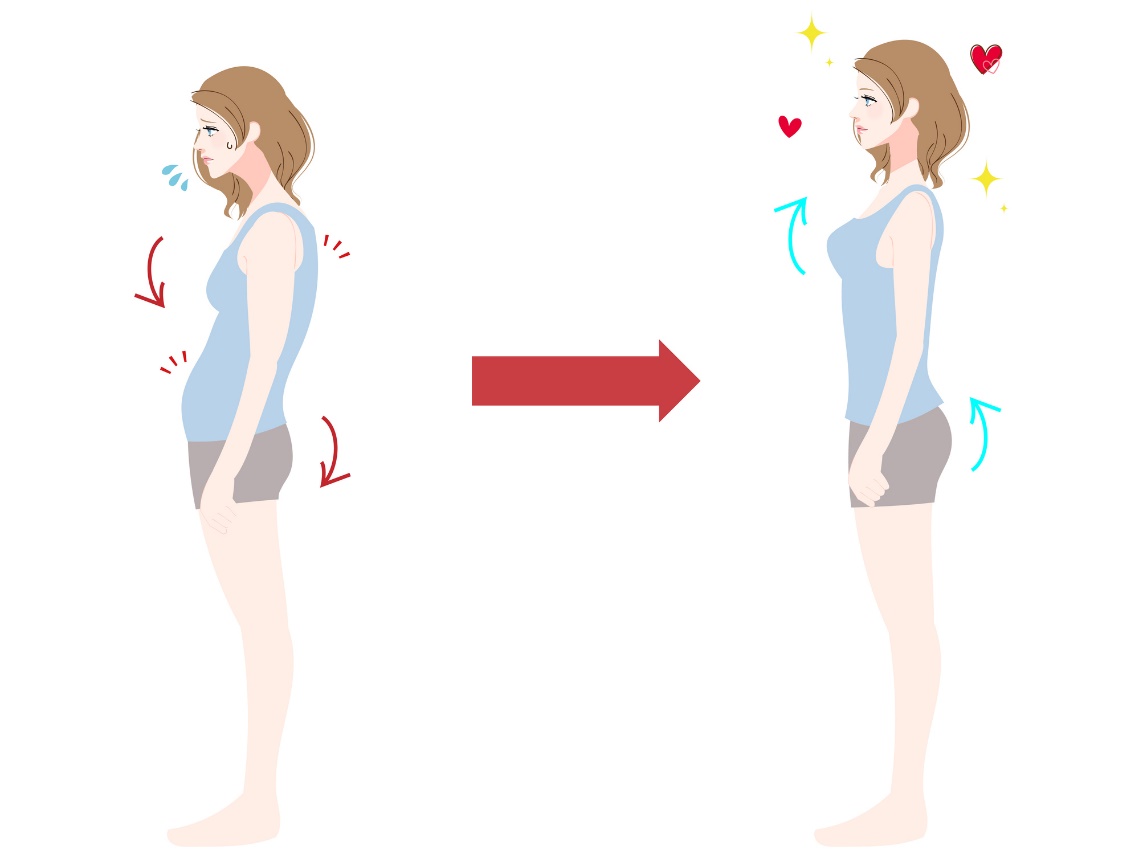- solen.cz- Pelvic floor at the border of disciplines. Solen - Mgr. Michaela Havlíčková
- theses.cz - Pelvic floor dysfunction. Bachelor thesis. Marie Davidová MUDr. Petr Kolář. Palacký University in Olomouc Faculty of Health Sciences
- sciencedirect.com - Postural Health in Women: The Role of Physiotherapy. S.J. Britnell BScP
- solen.cz - Biomechanical view of female pelvic floor structures. Solen - Miroslav Krhovský, MD
- Youtube, FYZIOklinika
Pelvic floor: what is its function and importance in women + Exercises for strengthening and relaxation

Often we are not aware of the pelvic floor muscles, yet we use them every day. Its function is extremely important. What is its importance and why is it particularly associated with the female sex?
Article content
Basic information about the anatomy of the pelvic floor
Anatomically, the pelvic floor consists of a group of muscles that together resemble the shape of a bowl. It is composed of a large number of small muscles. Functionally, it is divided into two basic parts: the pelvic and urogenital muscular septum.
The pelvic floor forms the functional enclosure of the pelvic cavity.
The pelvic floor significantly influences the position, stability, mobility and function of the internal organs of the small pelvis.
Function and importance of the pelvic floor muscles
Due to the anatomical location of the pelvic floor, its importance and functionality has been extensively described within professional books.
However, the basic functions of the pelvic floor can be simplistically divided into:
- Stabilizing (postural) functions
- Closing function
- Relaxation function
- Sexual functions
Stabilizing functions
The pelvic floor stabilises and maintains the correct position of the internal organs of the small pelvis - the bladder, uterus and rectum. It keeps the organs in the correct position by physiological muscle tension.
It regulates the mobility (movement) and stability of the pelvic organs. The pelvic floor also fixes the pelvis and pelvic plexus at rest and during movement.
The pelvic floor muscles work closely with the respiratory muscle, the diaphragm. Together they maintain and regulate the physiological intra-abdominal pressure during breathing.
The pelvic floor, diaphragm muscles, deep spinal muscles and transverse abdominal muscles together form the HSS - the deep stabilization system of the body.
The HSS provides internal stability to the trunk and mid-body, regulates intra-abdominal pressure and the breathing pattern (respiration) itself.
Closing function
The closing function of the pelvic floor muscles is particularly important in common situations such as coughing, sneezing or handling heavy loads. The pelvic floor muscles contract and reflexively close the muscle sphincters.
If the bladder or digestive outlet is full at any given time, the pelvic floor is a reflexive savior.
Since the pelvic floor is also controlled by will, we ourselves regulate the emptying function and at the same time the contraction of the muscular sphincters.
Relaxation function
The opposite of the closing function of the pelvic floor muscles is its opening and relaxing function. We use this function every day during the emptying of urine and stool. There is a conscious regulation of muscle contraction and relaxation of muscle tension.
The opening function is important in a woman in terms of childbirth, when the sphincters and vaginal entrance are relaxed.
Similarly, the function of pelvic floor relaxation is also important in the context of intercourse and allowing the sexual organ to enter the vaginal entrance of the woman.
Sexual function
The pelvic floor is functionally and structurally connected to the reproductive organs of the small pelvis. It plays an important role in the proper functioning of the sexual organs and in the experience of sexuality and intercourse in both men and women.
Its condition can affect the ability to have an erection in men and the experience (sensitivity, pain) in women.

The pelvic floor can affect the function of organs
If the pelvic floor muscles are not in physiological tension, correct position and strength, the function of the pelvic organs can be adversely affected.
It is therefore important to pay attention to the pelvic floor muscles, which maintain the appropriate position and physiological function of the pelvic organs.
With increased muscle tone and muscle spasm (stiffening of muscle fibres), there may be insufficient blood supply to the pelvic floor.
Insufficient blood supply and reflex contractions of the smooth muscles of blood vessels and organs can subsequently lead to undesirable symptoms. Examples are pelvic pain or functional disorders of the menstrual cycle, such as excessively painful and irregular menstruation.
Conversely, inadequate muscular activation of the pelvic floor muscles can lead to weakening of the muscles or sphincters of the organs.
A common symptom of pelvic floor weakness is pelvic pain, spontaneous leakage of urine, especially when moving, coughing or sneezing. Pelvic floor weakness is common in women after childbirth.
The condition, diagnosis and therapy of pelvic floor weakness should be discussed with a specialist (gynaecologist, urologist, physiotherapist). However, it is always necessary to rule out an organic cause of the health problem and then to prescribe rehabilitation therapy.
There are many causes of pelvic floor dysfunction. Among the most common are:
- Hormonal changes and imbalances
- Overweight
- Improper pelvic positioning
- Muscular and skeletal imbalances of the musculoskeletal system
- Excessive overuse of the pelvic muscles
- Insufficient activation of the pelvic floor
- Improper breathing and pressure regulation
- Childbirth
- Climacterium (menopausal period)
Possible manifestations of pelvic floor dysfunction:
- Urinary leakage, incontinence
- Decline of pelvic organs
- Pain in the pelvis and coccyx
- Pain in the lumbar spine
- Menstrual cycle disorders
- Pain during sexual intercourse
- Erectile dysfunction
- Problems with defecation
The importance of the pelvic floor in women
The pelvic floor is important for its stabilizing and sphincter function for both sexes equally. Also in the male sex, the condition of the pelvis can affect erectile function and the experience of sexuality.
In women, however, it has an added function with respect to the menstrual cycle and the period of pregnancy.
In women, the pelvic floor muscles have an added significance with regard to their effect on the menstrual cycle, the gestation period (pregnancy) and the actual delivery of the baby. The pelvic floor muscles also play a role in recovery after childbirth.
Overloading, weakening or malpositioning of the pelvic floor muscles can have a noticeable effect on the female cycle. It is therefore advisable to rule out an organic cause with a gynaecologist when menstrual cycle disorders and problems occur.
If a spectrum of diagnoses is ruled out, physiotherapy (rehabilitation) in gynaecology is recommended.

Pelvic floor rehabilitation
Pelvic floor rehabilitation consists of a thorough kinesiological analysis of the musculoskeletal system, diagnosis of the condition of the pelvic floor, pelvis and subsequent determination of rehabilitation therapy.
During pelvic floor physiotherapy, the therapist uses gentle manual and mobilization techniques in the spine and pelvis, soft and myofascial techniques. It is also possible to use auxiliary physical therapies (thermotherapy, hydrotherapy, electrotherapy...).
The main focus of pelvic floor and pelvic rehabilitation therapy is kinesiotherapy - treatment with exercise.
During sessions with a physiotherapist and independently at home, the patient performs specific exercises and positions in order to eliminate muscle imbalances in the pelvic area.
As part of the diagnosis and relaxation therapy, it is also possible to use a specific technique through the patient's anal sphincter (per rectum).
In gynaecological physiotherapy, it is also possible to use a diagnostic technique through the vaginal opening (per vaginam). However, this is not a condition for undergoing rehabilitation.
Gynaecological physiotherapy also deals with the field of obstetrics. It offers health services for women after childbirth and in the postpartum period.
It consists in strengthening the pelvic floor, eliminating diastasis of the abdomen (spacing of the abdominal muscles), taking care of scars and speeding up the woman's return to normal life.
Gynaecological rehabilitation also extends into the field of surgery in terms of urogynaecological operations and subsequent recovery. It uses elements from the Ludmila Mojžíšová method, Kegel exercises, the DNS or PNF treatment methods.
The reason for seeking a physiotherapist in gynaecology is also functional sterility - the inability to conceive for a long time despite good organic results of diagnostic examinations.
In the context of movement imbalances affecting the pelvic floor, beware of:
- Anterior pelvic posture (duck walk)
- Relaxed abdominal musculature
- Overloading of the lumbar spine
- Insufficient activation of the gluteal muscles (buttocks, posterior chain)
- Breathing with inadequate activation of the diaphragm

Activation of the pelvic floor
Hint: Contraction and activation of the pelvic floor muscles is a similar sensation to stopping the flow of urine, contracting the cheeks, holding back stool, or in women, contracting the vaginal entrance.
Isolated pelvic floor contraction
The starting position is lying on the back with the lower limbs bent at the knee joints and the shoulder blades glued to the mat. There is no space between the spine and the mat.
The head is in extension of the spine and the shoulders rest freely on the mat away from the ears. The aim of the exercise is isolated contraction of the pelvic floor.
The practitioner tries to become aware of and draw in/tension the pelvic floor muscles, breathe smoothly using abdominopelvic breathing, and then relax the muscles.
When activating the pelvic floor, it is recommended to contract the gluteal muscles in isolation during the exercise.
Bridge with pelvic floor activation
The basic position is the same as in the previous exercise. Knees bent, shoulder blades resting on the mat and the spine glued to the mat. Knee joints are level with the width of the hip joints. Arms placed loosely by the body, palms down.
The pelvis is gradually raised towards the ceiling. The shoulder blades remain supported throughout the exercise.
In the upper bridge position, there is an isolated contraction of the pelvic floor muscles and activation of the gluteal muscles. With an exhalation, the practitioner drops back to the mat and relaxes the activated muscles.
Exercises to relax the pelvic area
Exercise in child's position
The basic position is lying on the back, the lower limbs are in the air and naturally bent at the knee joints. The spine is glued to the mat. The head is imaginatively in extension of the spine.
With her arms interlaced, the patient hugs her own knees so that her elbow joints are extended. From this position, she then pulls her knees towards her chest so that the cervical spine and coccyx are off the mat.
After approximately 5 seconds of free breathing in this position, the patient relaxes and returns to the basic position or places the lower limbs on the mat. The joints in the cervical region, pelvis and coccyx are automated.
Exercise in the frog position
The starting position is lying on the stomach with the lower limbs extended and the upper limbs spread so that the trunk is at approximately right angles. The head is in extension of the spine and slightly turned to the right side.
The practitioner then bends the right lower leg at the knee joint. The bent knee is curled in an imaginary arc along the mat towards the body at the chest and ribs. It is possible to use the hands to pull the knee towards the body.
In this frog position, the practitioner holds the knee for a few seconds, breathing freely, and then slowly returns the knee to the base position. He or she then switches legs along with turning the head to the opposite side.
The spine, ribs and hip joints are stretched and automated.
Exercises to activate and relax the pelvic floor
The position of the exercise is lying on the stomach with the lower limbs extended. The head is facing the mat or slightly turned to the side. With the palms of the hands the practitioner grasps the gluteal muscles.
The pelvic floor muscles are activated and pulled in while the gluteal halves contract together. After a few seconds of contraction, the grip of both the pelvic floor muscles and the gluteal muscles is then released with an exhale.
As we exhale and relax the muscles, we stretch (open) the gluteal muscles slightly upwards towards the spine with our own hands. The muscle fibres of the pelvic floor are activated and then relaxed.
Interesting resources










